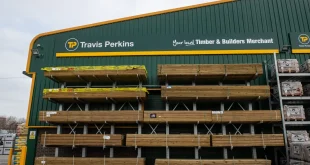The roofing market is estimated to have grown by around 4.5% in 2014, following a period of poor performance, with a decline in 2012, and a modest increase in 2013.
Driven largely by the Help to Buy schemes and a shift back from flats to houses, demand for roof tiles has outpaced supply over the past few years. In 2015 the market value is set to reach 6% growth, and over the short to medium term future, reasonable volume growth is also expected.
Roof tiles account for up to 40% of the market by value, with concrete tiles constituting the largest sub-sector by both value and volume. Clay tiles are also significant, with fibre cement and natural slates occupying relatively small niches.
Housebuilding and domestic re-roofing are the largest applications although commercial usage is also important.
Profiled metal roofing is almost as large in value terms, although applications are almost exclusively limited to warehousing, industrial buildings, airport structures, waste management facilities and retail ‘sheds’.
The market is split between composite panels, standing seam, twin-skin systems and single sheets, with the latter mostly used for agricultural buildings and for over-cladding.
Flat roof membranes & felts account for around 15%, with reinforced bitumen membranes dominating this sector. Single ply membranes are increasing in popularity and account for almost a third of the market, and in the longer term these products are expected to show higher than average growth.
The rooflights sector is also an important sector in terms of value while other hard-to-quantify niche markets such as fully supported metal roofing, bitumen & cedar shingles, account for smaller shares.
The distribution of roofing materials varies significantly between different product sectors. Builders’ merchants and roofing merchants are the key routes to market for suppliers of concrete and clay tiles.
As the majority of roofing slates are imported, independent importer and distribution networks are the main channels. Imports are largely limited to natural slates, which dominate this particular sub-sector of the UK roof coverings market and in the profiled sheets and tiles sectors, both import and export levels are low.
With flat roofing systems mainly used on commercial buildings, the main channels are roofing merchants and direct sales, with builders’ merchants typically only supplying bitumen felts for RMI and extension projects.
Keith Taylor, director of AMA research, said: “Over the short to medium term we expect reasonable market growth, largely driven by private housebuilding activity, although the end of government’s ‘Help to Buy’ scheme may be a constraint.
“Other end-use sectors likely to show increased demand are commercial offices, industry and leisure, reflecting expected recovery in the commercial new build sector as well as commitments to further expansion in Advanced Manufacturing and waste management.
“However, cuts to public sector capital investment will continue to have a negative impact, leading to declines in demand for roofing on public sector offices, MoD and healthcare newbuild works.”
 Builders Merchants Journal – BMJ Publishing to Builders Merchants and the UK merchanting industry for more than 95 years
Builders Merchants Journal – BMJ Publishing to Builders Merchants and the UK merchanting industry for more than 95 years



